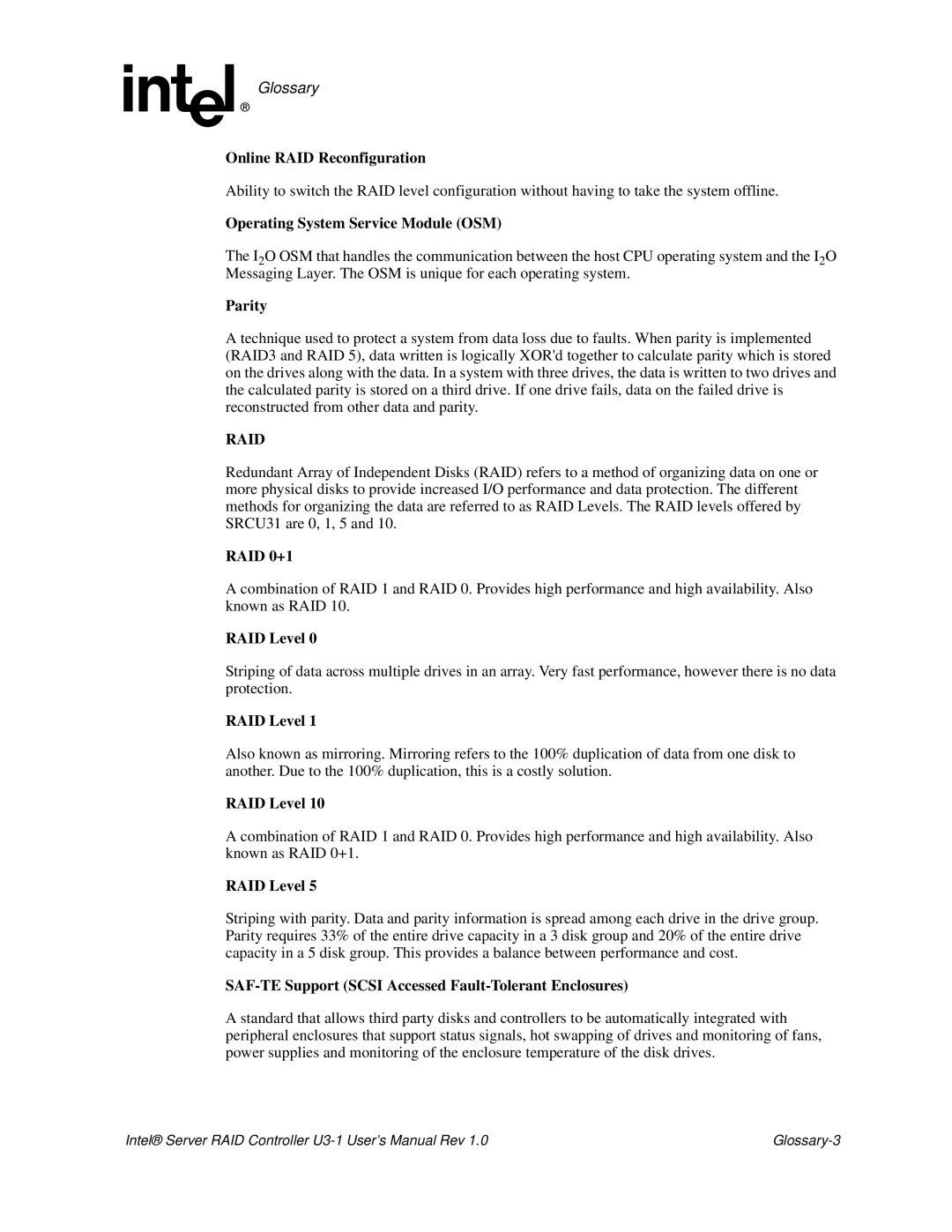
Glossary
Online RAID Reconfiguration
Ability to switch the RAID level configuration without having to take the system offline.
Operating System Service Module (OSM)
The I2O OSM that handles the communication between the host CPU operating system and the I2O Messaging Layer. The OSM is unique for each operating system.
Parity
A technique used to protect a system from data loss due to faults. When parity is implemented (RAID3 and RAID 5), data written is logically XOR'd together to calculate parity which is stored on the drives along with the data. In a system with three drives, the data is written to two drives and the calculated parity is stored on a third drive. If one drive fails, data on the failed drive is reconstructed from other data and parity.
RAID
Redundant Array of Independent Disks (RAID) refers to a method of organizing data on one or more physical disks to provide increased I/O performance and data protection. The different methods for organizing the data are referred to as RAID Levels. The RAID levels offered by SRCU31 are 0, 1, 5 and 10.
RAID 0+1
A combination of RAID 1 and RAID 0. Provides high performance and high availability. Also known as RAID 10.
RAID Level 0
Striping of data across multiple drives in an array. Very fast performance, however there is no data protection.
RAID Level 1
Also known as mirroring. Mirroring refers to the 100% duplication of data from one disk to another. Due to the 100% duplication, this is a costly solution.
RAID Level 10
A combination of RAID 1 and RAID 0. Provides high performance and high availability. Also known as RAID 0+1.
RAID Level 5
Striping with parity. Data and parity information is spread among each drive in the drive group. Parity requires 33% of the entire drive capacity in a 3 disk group and 20% of the entire drive capacity in a 5 disk group. This provides a balance between performance and cost.
SAF-TE Support (SCSI Accessed Fault-Tolerant Enclosures)
A standard that allows third party disks and controllers to be automatically integrated with peripheral enclosures that support status signals, hot swapping of drives and monitoring of fans, power supplies and monitoring of the enclosure temperature of the disk drives.
Intel® Server RAID Controller |
